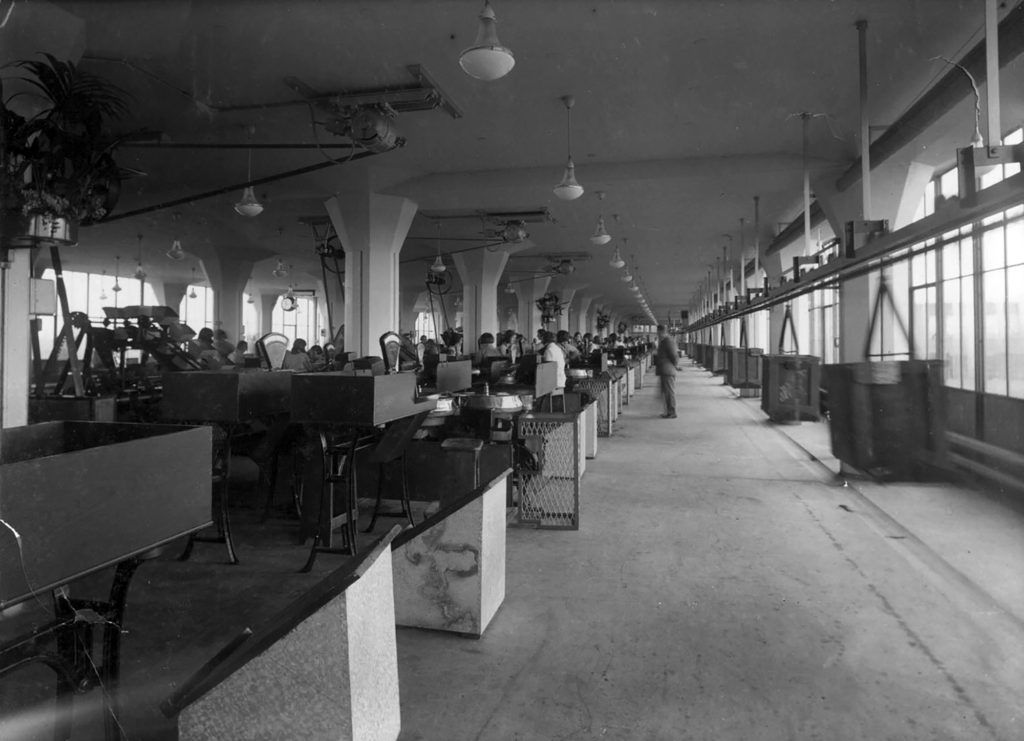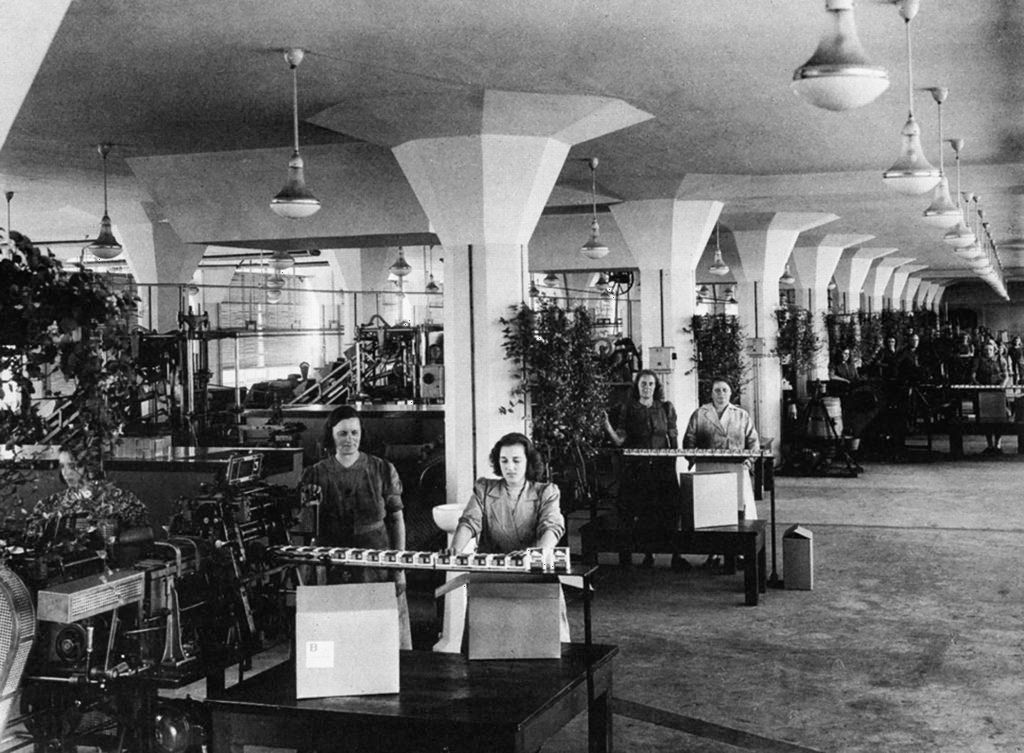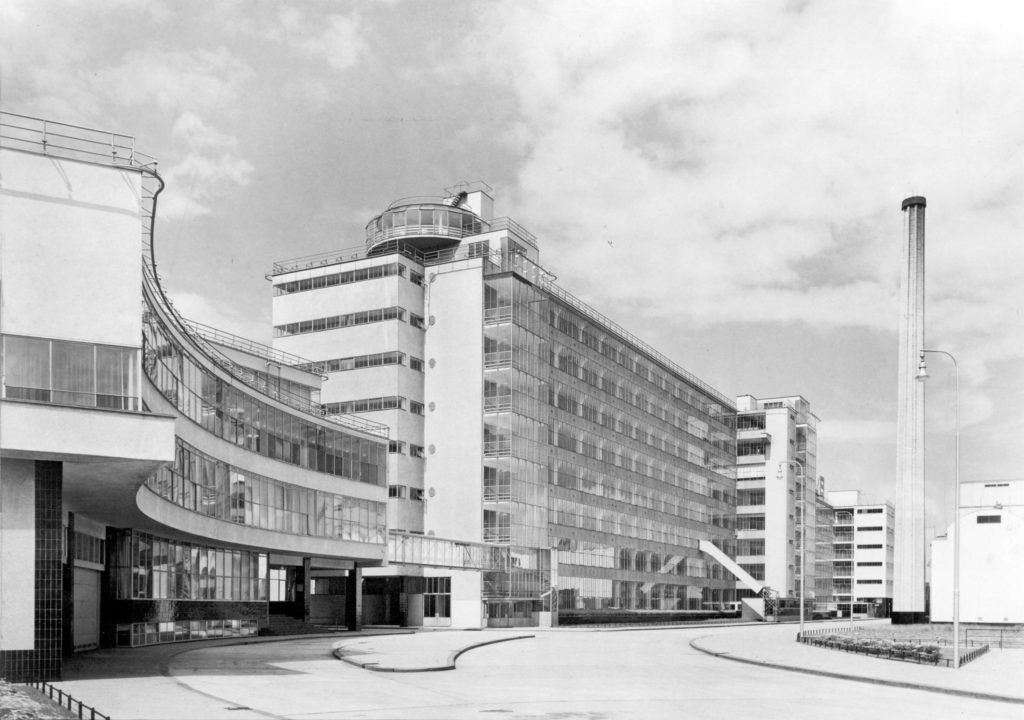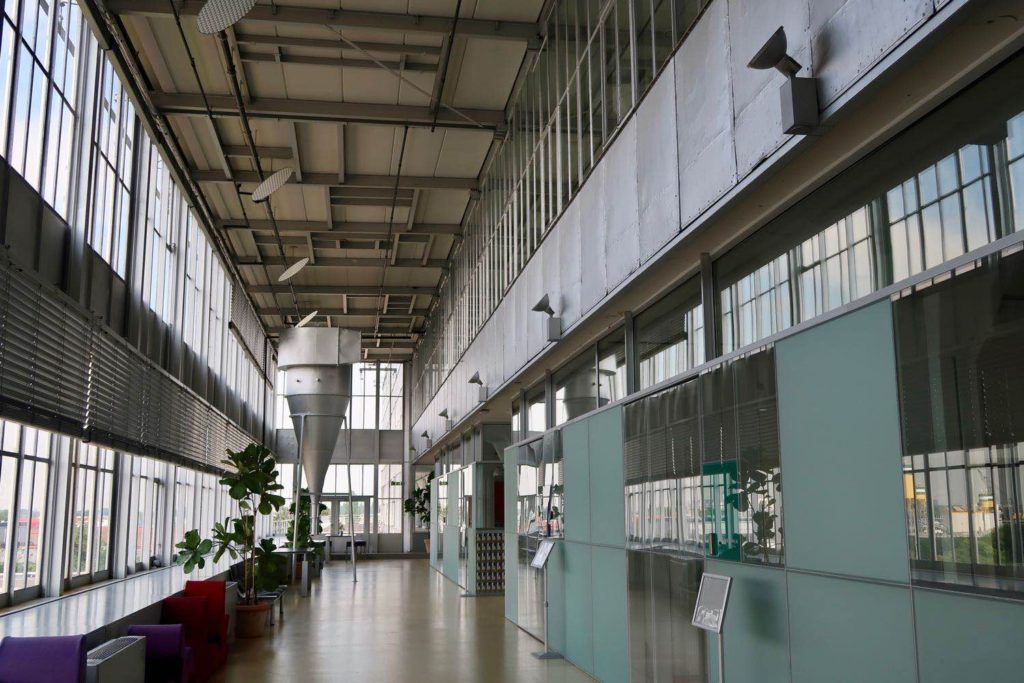The Van Nelle Factory: A Modernist Architectural Classic
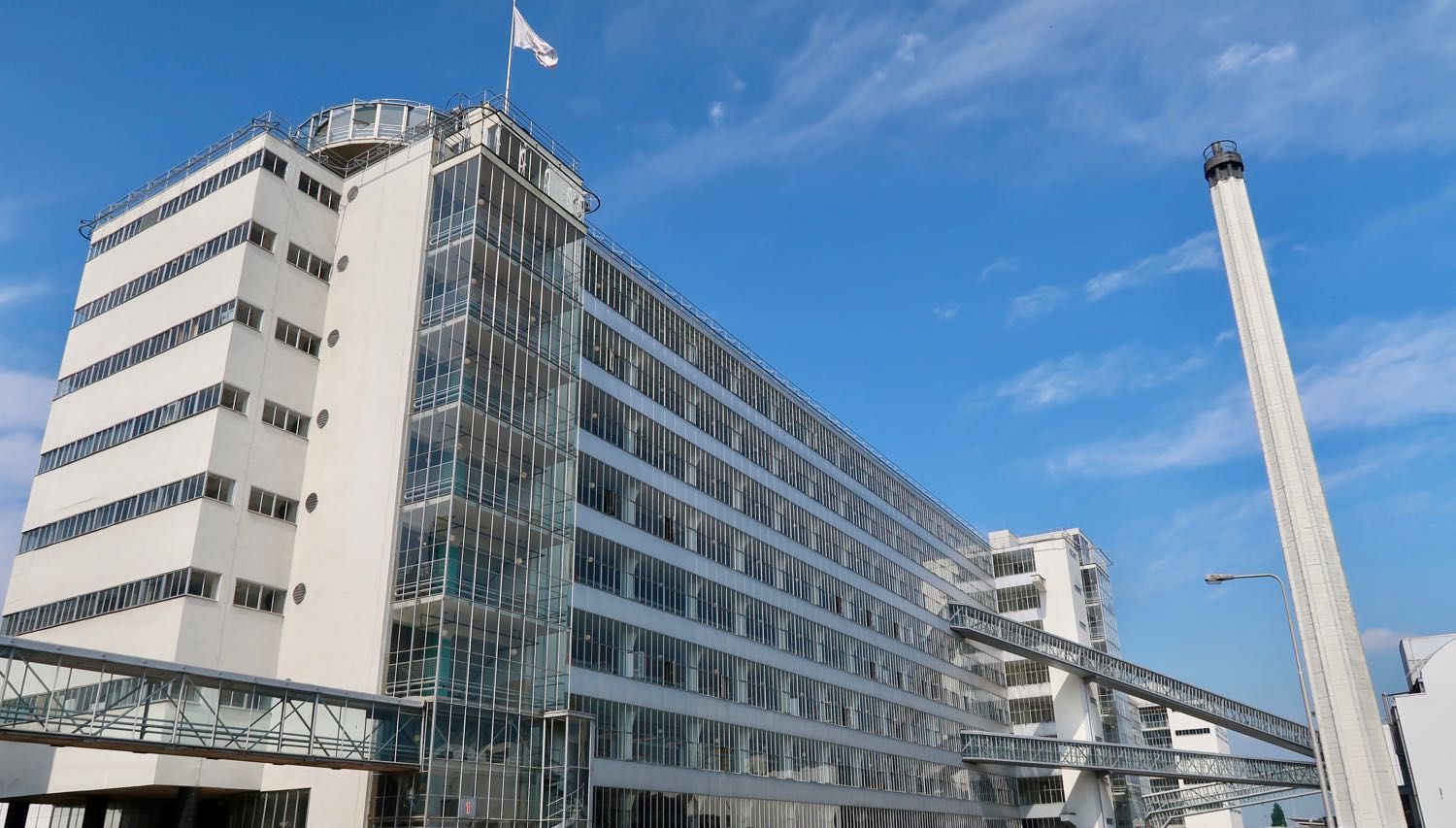
- The Van Nelle Factory
- Constructed 1925-1931
- Architects: Leendert van der Vlugt of Brinkman & Van der Vlugt
- Address: Van Nelleweg 1, Rotterdam, Netherlands
- 51°55’25.2”N 4°25’58.3”E
Introduction
At 220m long, 8 stories high and 60,000m² in size the Van Nelle Factory in Rotterdam rises up against the flat landscape surrounding it even if it doesn’t tower above the other buildings like it once did when it was finished in 1931.
Designed and built in the 1920’s on the banks of a canal in an industrial zone on the then outskirts of Rotterdam it was a pioneer of a new form of Construction that the Dutch called literally New Building or ‘Nieuwe Bouwen’. This was a modern factory building made just at the birth of Modernism and incorporating the latest technology plus techniques developed on site by the constructors it became one of the buildings that would go on to define the style of modernism itself. A modernist classic from the day it opened.
Now a UNESCO heritage site it still maybe is not as well known as it should be being both a great influence in early modernism and an beautiful piece of frozen social history that is often overlooked.
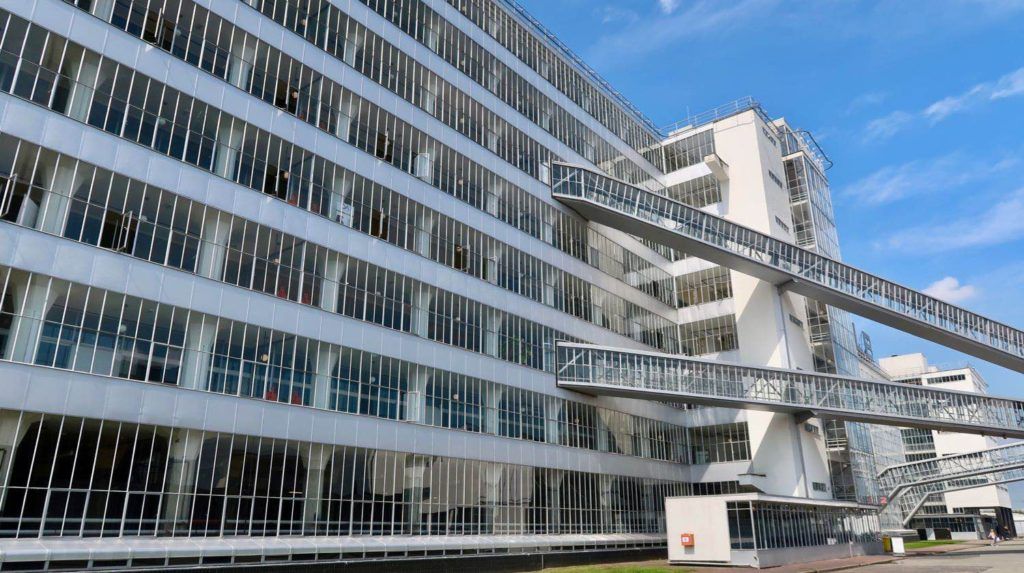
New Architectural Solutions
A new Factory for the Van Nelle corporation was commissioned by the co-owner of the company, Cees van der Leeuw. The project was ambitious from the start to build the most up to date factory possible. The factory, processed coffee, tea and tobacco and later on additional chewing gum, cigarettes, instant pudding and rice.
The building required many changes over time in the production line and a large amount of open space so that it was easy to adapt and change the layout as needs saw fit. The design was conceived to allow for managing that change and delivering a modern factory with facilities second to none.
The core structure of the building would not change but it would be able to support a glazed external wall and any subdivision inside for ultimate flexibility. For the first time with a concrete fame and lightweight external glazed walls a factory that admitted light and was well ventilated was possible.
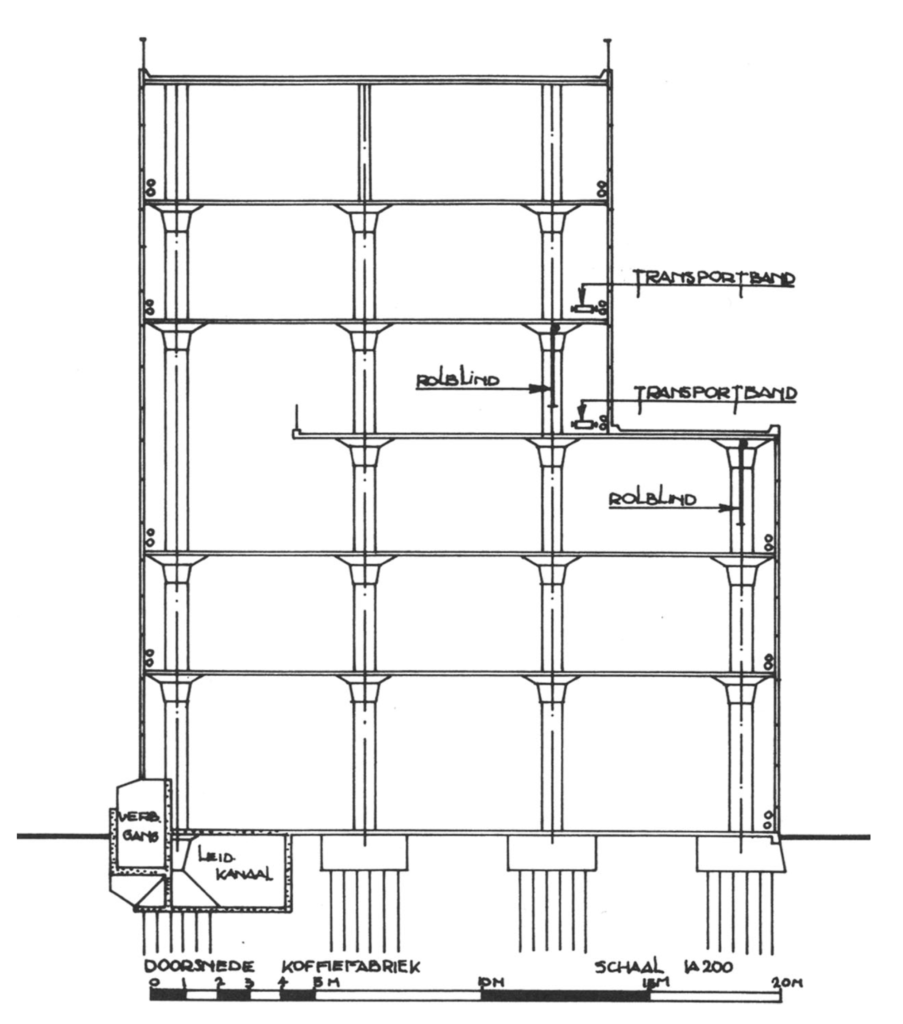
Section showing Mushroom Columns and Curtain walls. From NAI Collection Database - Het Nieuwe Instituut.
To do that they used a shallow and long footprint, the whole factory is over 220m in length but only 19m wide. The external walls are fully glazed utilising one of the first curtain walls ever. The factory structure is of concrete columns supporting concrete slab floors.
The distinctive mushroom columns support flat slabs without beams to maximise the sunlight into the building. The columns sit back from the perimeter to further allow the glazed external walls to run uninterrupted along the facade. The service stairs and washroom facilities are attached to the factory but sit on the front of the facade not interrupting the main factory structure.
Sunshades were installed to control internal solar gain with openable windows while radiators sat in front of the glazing to heat the building during winter. All the services were located between the 1st row of columns and the external facade whether high up on the ceiling or low and beside the floor of the facade.
Attribution and Design of the Buildings
It’s not as straightforward a design attribution as many buildings are, perhaps because of the early death of the chief Architect Leendert van der Vlugt who died in 1936 only five years after the completion of the factory.
Mart Stam also a colossal of early Dutch Modernism was an assistant at the office at the time and its probably fair to say that Mart Stam and J.A.Brinkman (the other partner in the office Brinkman & Van der Vlugt) because they survived van de Vlugt and whatever other reasons ended up with much more of the credit than deserved. It seems clear though through contemporary witnesses he was the principle designer. see J.B. Bakema, “L.C. van der Vlugt”, Amsterdam 1968, (English edition).
Modernist Inspiration from Russian Constructivism
Any time you see something written about The Van Nelle factory you will hear it was influenced by Russian Constructivism. The connection seems solid. Mart Stam one of the draughtsman for the project was well connected with the Russian avant-garde already in 1922 before the factory was conceived. In 1926, during his first year of work for the Brinkman & Van der Vlugt office, Stam organised an architectural trip to the Netherlands for the Russian artist El Lissitzky and his wife Sophie Küppers.
However with its curving office building leading onto the factory, the round observatory tower and treatment of the inclined ramps that look like boat docking ramps the building at least to me shows a wider influence with modernisms other doyens like Le Corbusier. It’s probably more accurate to say that the people responsible for the design were well versed and well connected with contemporary thought at the time and that the influence was most likely interconnecting.
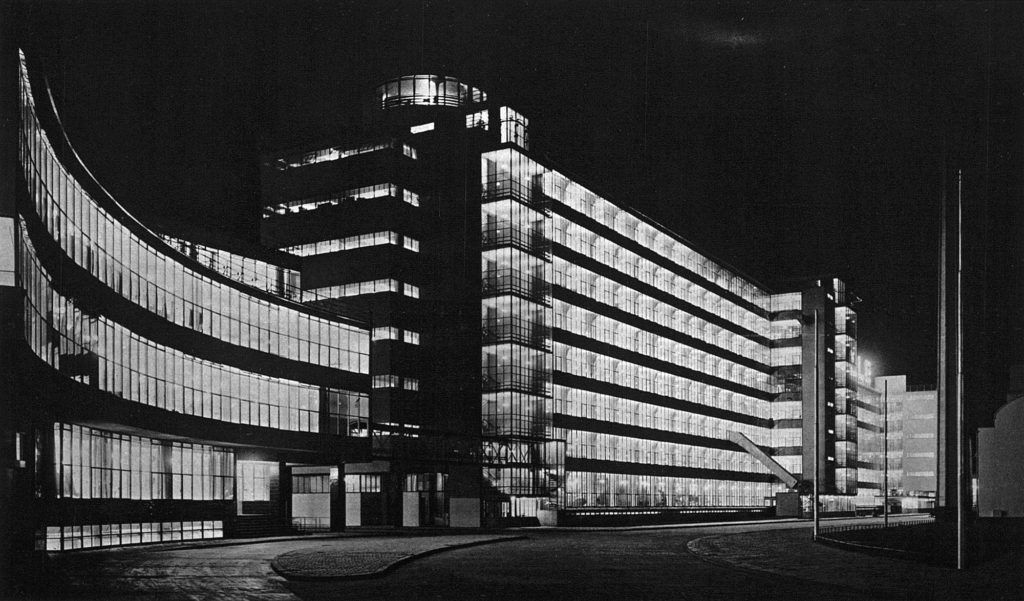
Factory at night. Photo from NAI Collection Database - Het Nieuwe Instituut
Social Development reflected in the Design
One things that stands out in the Van Nelle factory is its on the cusp of the modern world. It embodies a time in European and Dutch history of big social change that came about with the industrial revolution it reflected. A complex of factories and associated buildings it also provided sports fields for recreation, a factory garden where staff could take lunch breaks, and the latest sanitation facilities for personal hygiene.
These are all forward looking and unusual for the time. The main stairs are a pair that separately ascend the building and lead to two different washrooms. The reason was that the men and the women used separate staircases. The workers were expected to wash every day before they started their shifts and they were expected to wash their hands after they went to the bathroom. The bathrooms are glazed to the stair lobbies with a kind of nook for someone to view the workers washing their hands after they had been to the toilet.
This may sound bizarre to the modern ear, but in the early thirties society was different. Women’s place in factories was still difficult and when they did work it was still not at every job. As for the washing and cleaning of hands most people were much less accustomed to doing it than today. I don’t have the numbers for The Netherlands at this time but for example in 1920 only 1% of houses in the US had electricity and indoor plumbing at all. The first generation of workers in this factory would have come from homes with no running water much less central heating or electricity.
The New Renovation
The Van Nelle factory was working for over 60 years until 1996 when a company reorganisation shut it down. Then a development company bought the site and gave Eric Gude, a Dutch specialist in the conversion of former industrial sites the brief to change of use for the Van Nelle factory in 1997. He introduced Wessel de Jonge, an authority on the renovation of modern architecture in 1999, to coordinate the overall renovation which began in the year 2000.
The renovation is I think a great example of keeping the spirit and much of the detailing of the original while realising an upgrade of the facility to modern requirements. The external walls were kept mostly as they had been but internal partitions were used to provide high quality office spaces while preserving the lightness of the inside. Like the Cable Factory in Helsinki it is an example of an old industrial building being changed into a mixed use cultural and commercial building successfully.
After renovation it was designated by UNESCO as a world heritage site in 2014, a clever touch to get the renovation in before the designation as I image it would have been a harder job to modernise the building the other way round.
Visit
You can visit the building with a guided tour of about 90 minutes which I think is well worth the time to really see and understand the building.
References
Book - J.B. Bakema, “L.C. van der Vlugt”, Amsterdam 1968, (English edition).

